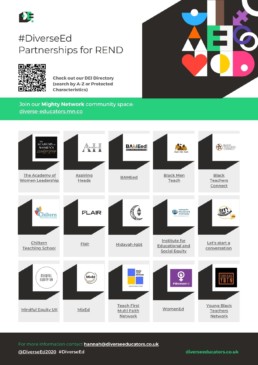Seeing the Unseen
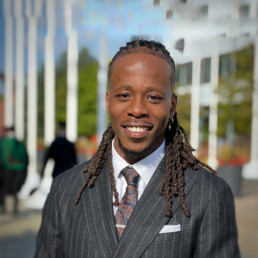
Written by Tyrone Sinclair
Tyrone is deputy headteacher of Addey & Stanhope School in London. He was a contributor to the BBC Teach resource, Supporting care-experienced children.
A significant majority of educators are drawn to the profession because they aspire to be catalysts for change. However, they are often taken aback by the limitations they encounter as they grapple with the multifaceted aspects of the profession. Change through support is a very delicate skill, one often not covered thoroughly whilst training, but it necessitates intentional leadership at an institutional level. Nonetheless, educators possess a unique liberty in that we are all leaders, regardless of our level of authority. We all possess the capacity to foster safety and facilitate opportunities for change within our respective spheres of influence, whether it be in our classrooms, through the curriculum, parental engagement, meetings, trips, and so forth – the possibilities are endless.
We are currently living in one of the most inclusive eras in human history. Whilst this allows for celebration, it also compels us to delve deeper and consider who is being included. Whose voices are being marginalised? Whose experiences are being disregarded? Who is seen and who is unseen? Ultimately, how is equity being applied in these circumstances?
The fight for inclusivity is a pursuit of social justice that extends far beyond the confines of the classroom. Its effects can be recognised and rewarded on a global scale. Although we may be making progress towards inclusive equity, it is important to acknowledge that not all spaces prioritise safety or consideration for all individuals. Education, therefore, is an embodiment of social justice as it endeavours to address the various inequalities that exist within society by creating opportunities and explicitly striving to provide equal opportunities for all.
This raises the question – what can I, as an educator, do? Amidst the external pressures, deadlines, targets, and ever-expanding job description, how can I make a meaningful change?
I believe the answer lies not in what can be done, but rather in how it can be done. I have been challenging educators to reconsider the spaces they create for safety. I urge them to contemplate the most vulnerable student who may ever enter their classrooms. Consider all the safeguarding concerns, whether they are rooted in familial or contextual factors. Reflect on the experiences these students have endured not only throughout their short lives, but even on that very morning. Contemplate the sacrifices and who they have to leave at the door just so they can walk into your space and conform.
Care-experienced young people are often among the most vulnerable individuals we encounter. The range of experiences they may have endured is vast, but more often than not, these experiences are far from ideal. Imagine the worst possible scenario. Consider the impact this must have on their worldview and how this trauma manifests itself in their thoughts, pathology, behaviours, and even their physical wellbeing. Now, take into account the intersectionalities that these young people may identify with. How much more challenging would it be for those from marginalised groups? How would you connect with such a young person? How would you welcome them into your space? What measures would you put in place to support, encourage, reassure, and protect them? How would you guide them if things went awry? Undoubtedly, your approach would be thoughtful, compassionate, and considerate. We know that for every vulnerable young person we are aware of and deem worthy of intervention, there are countless others who remain unknown and unsupported. Moreover, the strain on resources and support services makes it even more arduous for marginalised groups to access the help they need. Thus, your approach and support as an educator are pivotal to the safety and wellbeing of these young people, as your intervention may be the only kind they receive. Consequently, every interaction becomes an opportunity for intervention.
The experience of marginalised groups is to be unseen. This is often unintentional, but it is undeniably systemic and institutionalised. As educators, we are on the frontlines, and it is our duty to intentionally see what the world chooses to ignore. We must consciously consider worldviews and experiences that may differ fundamentally from our own. We must be intentional about change.
What can care-experienced young people teach us?
Acknowledging the unseen requires us to not only consider young people who have experienced care, but also challenges us to broaden our considerations even before they enter the system. Many care-experienced young people were once students in someone’s classroom, often unseen and unnoticed. However, we have the privilege of seeing the unseen and deliberately choosing to create safety for them within the spaces we control and have influence over.
For more information about the BBC Teach resource, Supporting care-experienced children, please visit https://tinyurl.com/ywykzd5h
Section 28: 20 Years On

Written by Hannah Wilson
Founder of Diverse Educators
Yesterday marked 20 years since Section 28 was repealed whilst also celebrating Trans Awareness Week. There is a brilliant thread on X here breaking down the key information all educators should know about this piece of problematic legislation which weaponised an identity group.
20 years ago, I had joined the teaching profession as a NQT at a boys’ school in Kent.
Homophobia was an issue.
I cannot remember having any training on my PGCE or in my NQT year about prejudice-based behaviour.
I cannot remember Section 28 being mentioned in either training programmes either.
After a year, I moved to London for a Head of Year role at a boys’ school in Surrey.
Homophobia was an issue.
But I felt more empowered to tackle it and I delivered the ‘Some People Are Gay – Get Over It! assemblies from Stonewall.
After three years, I then moved to a co-ed school in Mitcham.
Homophobia was an issue.
But we had strong whole school behaviour systems and consistent accountability so we tried to keep on top of it.
I also leveraged my pastoral and my curriculum leadership responsibilities to educate and to challenge the attitudes of our students.
After six years, I moved to a co-ed school in Morden as a Senior Leader (still in the same trust).
Homophobia was an issue.
But we had zero tolerance to discrimination and robust behaviour systems in place so we chipped away at it.
Three years later I relocated to Oxfordshire to be a Headteacher of a secondary school and Executive Headteacher of a primary school.
Homophobia was an issue.
But as a Headteacher with a committed SLT and visible role models, we hit it head on.
One of my favourite assembly moments in my twenty years in education was Bennie’s coming out assembly at our school. The courage and vulnerability she embodied as she shared the personal impact of the harmful attitudes, language and behaviour humanised the problem. We braced ourselves for the fallout, for the criticisms, but she was instead enveloped with love and respect by our community instead.
20 years on… six schools later…
Thousands of students… thousands of staff… thousands of parents and carers…
Homophobia was an issue – in every context, in every community, to a lesser or greater extent we have had to tackle prejudice and discrimination directed explicitly at the LGBTQ+ community.
Since leaving headship I have run a PGCE, consulted for national organisations, trained staff in schools, colleges and trusts (in the UK and internationally), coached senior leaders.
I am not a LGBTQ+ trainer – we have experts with lived experience who train on that. I speak about DEI strategy, inclusive cultures, inclusive language, inclusive behaviours and belonging. Yet, in every training session the experience of the LGBQT+ community comes up. It comes up especially with educators who started their careers in schools pre-2003 who talk about the shadow it has cast over them. It comes up with those starting their careers in schools asking when at interview you can ask if it is okay to be out.
Section 28 may have been repealed, we may be 20 years on, but have we really made any progress when it comes to tackling homophobia in our schools, in our communities and in our society?
Homophobia was and still is an issue.
As a cisgender, heterosexual woman homophobia has not personally impacted me. I have never had to hide my sexuality. I have been able to talk openly about who I am in a relationship with. I have not had to navigate assumptions, bias nor prejudice when it comes to who I date, who I love and who I commit to. This is a privilege I am aware of, but that I have also taken for granted.
A ‘big gay assembly’ may have been one of my professional highlights, but one of my personal low points was going on a night out to a gay club in Brighton in my early thirties, and my gay male friend being beaten up in the toilets in a supposed safe space by a homophobic straight man.
This is the reality for a lot of people I care about. Family, friends and colleagues who do not feel safe in our society. Members of my network who often do not feel safe in our schools.
It is our duty to ensure that our schools, our system and our society are safe for people to just be.
To be themselves… to be accepted… to be out at work (should they wish to be)… to be in love… to be able to talk about their relationships and their families…
It is our duty to ensure that we see progress in the next 20 years – as we are seeing a scary global regression of LGBTQ+ rights.
It is our duty to counter the current rhetoric – especially when it comes from our politicians who are weaponizing the LGBQT+ community.
It is our duty to challenge the haters and the trolls – if we as educators do not tackle it, then who else will?
Our gay students, staff, parents and carers need us to be allies. They need us to stand up, to speak out and to say this is not okay, this is enough.
Some signposting for organisations and resources to support you and your school:
Partnerships:
- Schools Out UK – they run LGBT History month and we collaborate on activities.
- Educate and Celebrate – they ran our LGBTQ+ training and school award for us.
- LGBTed – we hosted their launch at our very first #DiverseEd event.
- No Outsiders – we collaborate with them and celebrate their work.
- Pride and Progress – we partner with them and support their work.
- Just Like Us – we collaborate with them and amplify their Inclusion Week.
- Diversity Role Models – we collaborate with them and amplify their great resources.
- There are lots of other brilliant organisations and individuals working this space listed in our DEI Directory here.
Communities:
- ASCL – LGBTQ+ Leaders Network
- NAHT – LGBTQ+ Network
- NEU – LGBTQ+ Inclusion
- Pride and Progress – have an active P&P group in the #DiverseEd Mighty Network.
Books:
- Paul Baker – Outrageous
- Jo Brassington and Adam Brett – Pride and Progress
- Shaun Dellenty – Celebrating Difference
- Catherine Lee – Pretended
- Daniel Tomlinson-Gray – Big Gay Adventures
Podcasts:
Blogs:
- Amy Ashenden – Faith as a Barrier
- David Church – Take Back the Narrative
- David Lowbridge-Ellis – Keep Chipping Away
- David Weston – Pride Matters
- Dominic Arnall – Primary School Storytime
- Dominic Arnall – Section 28 is Still Hanging Over Us
- Gerlinde Achenback – Age Appropriate
- Ian Timbrell – Fight Against RSE
- Jared Cawley – My Wellbeing
- Katherine Fowler – Audit Your Curriculum
- Peter Fullagar – Don’t Look Back
- Rob Ward – Parents Support It and Students Want It
- STEP Study – Improving Support
- Vicki Merrick – Increasingly Visible
Resources:
- Bethan Hughes and Holly Parker-Guest – LGBT+ Inclusion toolkit
- David Lowbridge-Ellis – The Queer Knowledge Organiser
Training:
Why students should be taught the truth about Remembrance
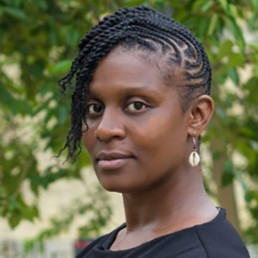
Written by Selena Carty
Cultural and Ancestral Genealogist, Global War Heritage Specialist, Identity and Empowerment Consultant and Founder of BlackPoppyRose.
I was recently asked by the British Army to contribute to its new set of school resources on Remembrance. As the founder of BlackPoppyRose, I accepted the opportunity. My aims are to enlighten all people of the contributions of African, Black, West Indian, Caribbean Pacific Islands and Indigenous communities to history in wars/revolutions and rebellions.
So, let me ask you a question: How do you mark Remembrance Day? For me, I remember Albert Carty who served in World War I in the No’2 Construction Battalion. After arriving in the UK, he travelled across England and Scotland as part of the lumberjack battalion. He returned home after the war and became a father to seven sons. Five went on to join the Royal Canadian Airforce and served in World War II. The remembrance of families doing their part in a world that had set so many apart.
Remembrance means a connection to yesterday and the yesterdays before yesterday, which brings light the relevance of our actions today. When I think about Remembrance, I think of my mother, father, grandparents and great grandparents. I think about the legacies of family. I wouldn’t be here today if it were not for the efforts made by those who made choices before I came into existence.
There is a crucial need to improve how we explain the significance of Remembrance to young people, especially in the UK. We live in a cosmopolitan modern world where everything is moving a lot faster than I remember. Everything is now! (Like Amazon Prime deliveries, with no understanding of the framework, planning and years of innovation to make this happen.)
The legacies that have built the worlds we see today are very often under-educated, misinterpreted or omitted. The more we do to encourage Remembrance will allow us to come together with our own unique stories and share the impacts that the changing worlds and legacies before us have had and will still have on us in the present and near future.
To know that you are connected to something that has passed is significant to why we are here, why we speak the languages we do, why our names are what they are, why we can call more than one place our home or ancestral homes, and even the accessibility to the music that we listen to. All this enables each of us to have a unique perspective about Remembrance that we all benefit from.
Where should children start to learn about their past? With their immediate families as well as their peers and friends’ parent are also potential sources of information teachers. Additionally, organisations like BlackPoppyRose can help point them in the right direction. We also encourage students to check their local libraries, bookshops, museums, galleries and archives as well as the internet by using key phrases or tags.
So, what more can schools do to teach pupils about Remembrance? Tell the truth about what you know. We all have a version of ‘truth’. Telling the truth resonates stronger than untruths as it allows us to identify with the world we currently live in and the legacies we have inherited from the past. It will help to understand the choices made by so many in uncertain times. We cannot change the past, but we can be open and honest about what has happened, allowing us all to work together to find improvements on things that are pre-existing and still affecting us all today.
The British Army has created a library of resources for secondary schools. To access its Remembrance resource, visit https://tinyurl.com/ye2928v7
Trans People are Loved: Diverse Educators in Allyship
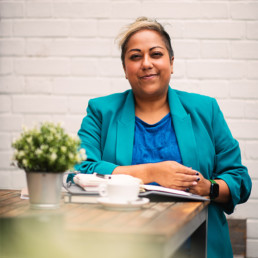
Written by Bennie Kara
Co-Founder of Diverse Educators
When a community comes together, beautiful things can happen. Here at Diverse Educators, we have witnessed the rise of transphobic narratives nationally and internationally and have felt, as many others do, an acute sense of helplessness about how to be active allies for the trans and non-binary people we know and love.
When we were approached by a member of the non-binary community in despair at hearing and experiencing such a wave of transphobia and gender critical rhetoric, we gathered associates and friends to discuss how we could do something, anything, to raise our voices and show that we could be ‘together-strong’. In time, this shaped into an evening solidarity event to take place virtually. We wanted to bring people together to signal, even in the smallest ways, that there is work to be done in protecting those who are increasingly marginalised in our society.
It was clear from the outset that we did not want to just focus on how difficult the social environment is for trans and non-binary people. We wanted, collectively, to use our voices to highlight both the reality for trans and non-binary people and the green shoots that we can see around us.
Our speakers were wonderful. Jo Brassington (they/them), a Diverse Educators Associate, outlined the legal aspects of trans and non-binary identities in schools. The wealth of comments and questions after their section showed that there is a real need for educators to have access to training on how to support and protect their trans and non-binary young people and colleagues. Hannah Jepson, (she/they) a business psychologist and expert in workplace inclusion, followed with a precis that highlighted the work of the corporate world in supporting trans and non-binary people at work. There were some enlightening comments in response showcasing best practice in the workplace. Finally, George White (he/him), a trans teacher and independent consultant/trainer on transgender identities and the Catholic faith, outlined the green shoots in how Catholicism is shifting the established narrative on trans and non-binary people.
Hannah Wilson, the speakers and I left the solidarity event feeling heartened that over 60 people had given their time to attend the event, with feedback that indicated a real need for follow up. While we knew that we wouldn’t be able to find distinct ways forward immediately, the networking and signposting that took place was useful in forging connections so that action can be possible in the future.
What we do in miniature creates ripples that, in turn, can create waves. This event served to show how much there is to do still in support of the trans and non-binary community, and each attendee was asked to pledge, if possible, what their next steps were using the hashtag #TransPeopleAreLoved. The pledges appeared like pebbles in the pond.
This is allyship.
Take Back the Narrative: Reflections on #DiverseEd Conference
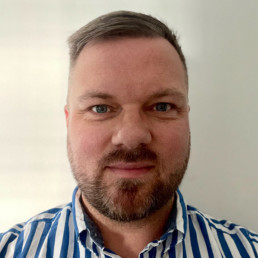
Written by David Church
David is an LGBTQ+ education consultant and former Deputy Head Teacher. He has over 10 years experience in education and is passionate about supporting schools to develop an LGBTQ+ inclusive culture and curriculum. Outside of education, David is a Regional Ambassador for It Gets Better UK.
Attending the #DiverseEd Conference in Bristol on Saturday felt perfectly timed. The backdrop of recent developments from the UK government regarding the trans community weighed heavily on my mind as I prepared for the day ahead. It seemed as if the trans community was under siege from multiple angles: teachers potentially being allowed to discriminate against trans young people in schools (https://www.thepinknews.com/2023/09/23/ehrc-guidance-trans-misgendering-pupils-schools/) and the proposed ban on trans women from women’s wards (https://www.theguardian.com/society/2023/oct/03/trans-hospital-patients-in-england-to-be-banned-from-female–and-male-only-wards).
As a cisgender gay man who had previously faced adversity under the infamous Section 28 (and the legacy since), I felt a deep empathy for the trans community, witnessing their increasing vulnerability and the reported surge in hate crimes against them (https://www.gov.uk/government/statistics/hate-crime-england-and-wales-2022-to-2023/hate-crime-england-and-wales-2022-to-2023).
As an LGBTQ+ education consultant, I was acutely aware that action was needed to ensure the safety of trans+ children, young people, and staff in schools. Fortunately, the conference offered a range of sessions on just this, highlighting the need for greater trans inclusion & diversity.
Every session I attended resonated with me on both a personal and professional level, but my mind was consumed with the urgent need to address the ongoing challenges faced by the trans community.
The first workshop I attended was led by Sarah Bonnell School, focusing on social justice in schools and empowering students to enact change within their communities. Their discussion of “cold anger” as a catalyst for change struck a chord with me (https://www.psychologytoday.com/gb/blog/brave-talk/202109/4-types-anger-everyone-should-know-about). This anger, when harnessed, could drive the transformation needed to combat the prevailing discourse around trans inclusion.
Equally, Shaun Dellenty’s keynote, highlighted the importance of challenging the narrative of fear and division, emphasising that we are stronger together, whether or not we identify as trans. The theme that stuck in my mind: How do we channel this anger and negative energy into positive action?
Similarly, in Bennie Kara’s keynote, the power of stories to reshape narratives was explored. She discussed how we need to move beyond viewing the trans community as victims or dangerous (a perception which has continuously been fed by media and entertainment). The history of LGBTQ+ rights is full of unsung heroes such as Marsha P. Johnson and Sylvia Rivera, who spearheaded the original Stonewall uprising. Yet, their stories are often overlooked in the narrative of our school curricula.
It is imperative that we teach about these individuals to reframe the narrative and challenge prejudices and biases. This will foster a more respectful society, one that goes beyond mere tolerance to genuine acceptance of every individual, regardless of their identity.
Jo Brassington, in their session on trans and non-binary inclusion in schools, passionately reminded us that silence and indifference regarding trans+ inclusion make us complicit. It reminded me of the words of David Morrison, Chief of Army in the Australian Army, which echo this sentiment: “The standard you walk past is the standard you accept.”
This is not about understanding what it means to be trans but about having compassion and acceptance for every trans person; knowing them as individuals and hearing their story. Stories have been central to human culture since time began, and it is now time to reshape these stories in the public eye. As agents of change, we must stand with the trans community, working towards a compassionate view that acknowledges them as individuals.
The #DiverseEd Conference offered a glimpse into the power of collective action, empathy, and storytelling to take back the narrative, ensuring that the voices and experiences of the trans community are heard, respected, and valued. We, as educators, have a unique opportunity to lead this transformation, shaping a more inclusive and compassionate society by ensuring our curriculum fosters a positive narrative of a range of trans people; from the books we read, to the significant role models we explore and the policies we have in place. Taking back the narrative is not just a goal; it’s a collective responsibility that we must all be conscious about in our schools.
Supporting Parental Engagement for EAL Students
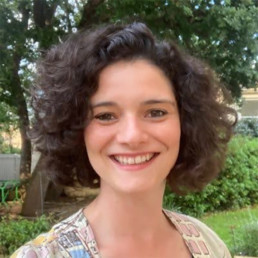
Written by Emma Sheppard
Emma founded The MTPT Project, the UK's charity for parent teachers, in 2016 when on maternity leave with her first child. She has 12 years experience as an English teacher, Lead Practitioner and ITT Lead, and now runs The MTPT Project full time.
I’m now into my third year of immigrant living, having relocated to France with my family in 2021, and – amongst all the other rather enormous changes – one of the most insightful experiences has been navigating the French education system with two children now in infant and primary school.
For context, our move to France marked the first time in twelve years that I hadn’t started September as a teacher. As a consequence, it was also the first time as a mother that I had been responsible for all the school runs, dropping my children off at their class, rather than breakfast club or handing over from an after school nanny. My children are bilingual, thanks to my French husband, and my French is competent, but – oh my! – have I felt the panicked feeling of perpetual confusion, catch up and miscommunication over the last two years!
Of course, having previously worked in schools with a high percentage of EAL, bilingual and multi-lingual students, and even managed our EAL department, it has been fascinating to be on the “other side”. But this insight has pertained, not to my children’s experience (indeed, my daughter is arguably more comfortable in French than in English), but to how we can support the parents in our communities who may not be fluent English.
Here’s what’s been really helpful for me, as the “F(French)AL” parent at the school gate…
Information Evenings
A short information evening early on in the term where parents get the chance to see their children’s classroom, leaf through their books, visually take in which book is the planner, which is for reading, what homework might look like etc., is a great starting point. It provides the opportunity for parents to demonstrate their level of English, and for teachers to take note of any families that might need additional support in clarity of communication. It also introduces parents to each other so that families speaking the same language can find each other and build community, or get added to the class WhatsApp group so they don’t miss out on important reminders or get togethers.
I make a point of speaking up at these meetings, and talking to the teacher afterwards so that they can really hear the extent of my clumsiness in French, but some parents might not feel comfortable doing this. Quietly engaging with parents as they come in, or leave the meeting with more than a “hello”, “good bye” can be a good way for teachers to get a better idea of how much English our families have.
Asking all parents in these meetings, their preferred means of communication – email, telephone, in-person, notes in planners – is a sensible way to secure clarity of communication from the start. Some parents may be able to speak and understand English confidently, but their literacy skills may be weaker. Some parents may be adept at using Google translate and balk at telephone conversations. Equally, for our native or fluent English speakers, email may be far preferable in a busy working day, to the interruption of a telephone call.
At the School Gate
The relaxed, conversational moments at the school gate are a great opportunity to show with smiles and gestures that students have had a great day, or to point out an important piece of information in a letter going home, or even to tackle challenges. This might be normal practice at primary level, but is particularly helpful for parents without much English who may otherwise have no means of knowing how school is going.
The hovering time afforded to me by the physical presence of teaching and support staff at the gate of my children’s first school meant that I was able to get to grips with how school lunches worked, wraparound care, strike days, when to bring in packed lunches, what on earth the system of cover teachers was in France. Remember that different countries have hugely different approaches to all aspects of education, and ways of doing things outside the classroom might be completely alien to some of our families – they were to me!
At secondary level, it might be trickier, especially beyond KS3 where students are more independent, but knowing which parents do collect their students, and swapping in a gate duty once in a while is a great opportunity for relationship building.
Inclusive Homework
Never have I had such thorough French lessons as when my son started CP, the equivalent of Year 2 when children learn to read in France. Every evening, he was required to read through syllables and increasingly complex passages from his Taoki text book. My pronunciation, vocabulary and understanding of French linguistics improved immeasurably over this year, even if I still can’t differentiate between the different ‘oo’ sounds. I now have two miniature teachers, as well as the shadow of their teachers to support my progress in French.
Homework activities – and resourcing these effectively – that allow parents to learn alongside their children, even if they are doing this surreptitiously rather than pro-actively, are a great way to boost parents’ own language skills.
Celebrate Home Languages
Yes, yes, I’m an English teacher and will leap at any chance to read a story and perform in front of an audience, but the jokes from parents and teachers about helping them to improve their English have resulted in a termly story-time slot for three year groups in my children’s current school.
As English speakers, we’re in the privileged position of speaking the global language of business, and as such, English is a valued language in most countries. Unfortunately though, this means that we look down – as a general culture – on other languages or consider them irrelevant.
This contempt is interlaced with prejudice, and I’ve definitely been on the receiving end of light-hearted mockery or messaging coming through my children and their friends, that indicates that these attitudes are also present in France. It creates tension, wariness and defensiveness and I’m incredibly conscious of the parents and teachers who make room for me, and are generous with my language – allowing me to make mistakes and feeding me vocabulary when I stumble – and those who look at me with fear or discomfort when I begin talking.
Story time has provided an opportunity to celebrate English – I deliver with props and songs and emphasis, and follow-up worksheets – and the children love it and share this enthusiasm with their families. Not all parents will be interested or available for a set up like this, but events like World Book Day, a Home Cultures or International Day, are great opportunities to invite primary school parents to come in and tell a story in their home language. At secondary level, this could take the form of a drop down day or afternoon where parents, students and teachers set up a national market place stall of treats, games and language challenges for students to explore.
Offering community languages as an optional GCSE is also a hugely important signal that other languages are valued in your school. Parents need to be informed of how their can support their children with this extra-curricular commitment, and the importance of speaking, reading and writing the home language. Some parents might even be interested in supporting with language clubs, additional tuition, mock paper marking, or speaking exams.
Most importantly, remember that language limitations don’t make parents lesser, and it is definitely not our role as teachers to dictate how much English our students’ parents should speak, or the languages that should be spoken at home. Bilingualism and multilingualism are a gift, and “Time and Place” bilingualism – where specific locations (e.g. home and school) – are delineated for one or other language is a tried and proven method for building native fluency in more than one language.
Parents’ English may improve over time, or they may be very content with the level of language they have. This may be particularly true if they have secondary aged children and school is the only reason they need to understand or use their English. With small adjustments – many of which are attitudinal – we can embrace the parents of our EAL students and facilitate inclusive environments where they can engage with their children’s education in a way that feels appropriate to them.
“But is it age-appropriate?”
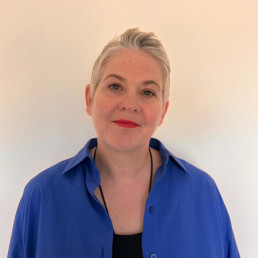
Written by Gerlinde Achenbach
Gerlinde Achenbach is a senior education consultant and former primary headteacher. Her career spans more than 35 years, with over 30 years teaching in schools. Since 2021 she has been supporting schools across the UK with Equity, Diversity & Inclusion, specifically LGBTQ+ inclusion. Her expertise is in leadership and changing school culture.
It’s now 20 years since Section 28 was repealed in England yet in primary schools we’re still, it seems, reluctant to talk with young people about being lesbian, gay, bisexual, trans or more. Some of us can’t get past the LGBT+ acronym, never actually defining what each letter stands for.
“Can I say ‘gay’ in Year 2?” one lead teacher for EDI was asked recently. We were talking during a recent 1:1 coaching session on developing best LGBT+ inclusive practice across the school. Deeply frustrated, the teacher bemoaned her experience with colleagues: “Some of them won’t include it beyond PSHE. Others never get round to it, telling me they’ve run out of time.”
Many primary class teachers are fearful of parental backlash in front of groups of other parents and their children. Some know that their senior leader colleagues are just as wary. And it’s true, this is one area where some parents and carers often feel emboldened to speak their mind. It’s embarrassing to be on the receiving end and, if you’re not confident about why we’re including LGBT+ themes in our learning and our environments, it’s easier to put your head in the sand. But let’s not forget that it’s statistically very likely that every family will have someone – parent, uncle or aunt, sibling, cousin or grandparent – who is lesbian, gay, bisexual, trans, queer or more.
“We want to make sure it’s age appropriate…”, say primary schools.
The DfE’s compulsory guidance on RSE came into force in September 2020, stating, ‘Primary schools are enabled and encouraged to cover LGBT content if they consider it appropriate to do so.’
With an independent review currently in progress to ‘advise the Secretary of State for Education on what is appropriate to teach in relationships and sex education and health education, and at what age’ , the stakes for ‘age-appropriate’ are high.
Of course, it’s important that the curriculum is appropriate for the age and experience of the children in each year group. But let’s not forget that when we talk about equity, diversity and inclusion, we’re moving beyond curriculum into the realm of whole school culture. The reservations we may have about being LGBT+ inclusive in younger year groups do not sit well with a culture of inclusivity and belonging. As a Primary Headteacher, I know that the majority of primary schools now include at least a handful of same-sex parented families, and often at least one child questioning their gender. That’s not forgetting the afore-mentioned LGBT+ relatives and friends. Surely we owe it to all the children living in LGBT+ families to see their own lived experience validated by our practice and provision? At the very least, our culture and curriculum should reflect and represent our LGBT+ children, both those who know it already and those who will know it soon enough. It’s our moral duty.
So, what could be more appropriate, for EYFS up, than talking about how families are made up differently, and that they have love for each other in common? Quite simply it is appropriate to have a curriculum where we share stories with young children about families and individuals who may dress, speak, identify or love differently from those they know, whilst talking about kindness and respect. We must also surely help children try to understand the injustice of being discriminated against, or harmed, simply for loving someone of the same gender.
We know that learning about sexual orientations other than heterosexuality does not ‘make you gay’, any more than learning that some people question the gender assigned them at birth ‘makes you trans’. Young people are discerning and knowledge is power. If any of the above applies to them, they will learn about it in a safe, accepting space. If it doesn’t apply, they have learned respect and compassion for others. Is it then morally acceptable to put our heads in the sand when we know that through educating our children, we educate our families and our communities?
Put simply, LGBT+ inclusion is about showing respect and compassion for all LGBT+ people as equal members of our diverse school and wider communities. It’s about being included in every aspect of school life and knowing you belong.
It’s always appropriate, at every age.
Woke, but not too woke?
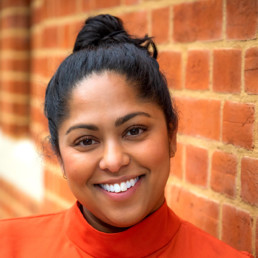
Written by Bilkis Miah
Bilkis brings a powerful perspective to the table, shaped by her upbringing as a British-Bangladeshi immigrant. With experience in both management consulting and the education sector, she offers a rare blend of expertise and cultural insight. Her unwavering commitment to breaking down barriers and challenging norms has positioned her as a powerful voice for change. Bilkis is not just a thought leader, but a driving force for positive impact, inspiring and empowering communities everywhere to re-imagine what is possible.
Inclusivity, or ‘wokeness’ as it’s come to be known, isn’t political correctness gone mad, it’s an essential move for our children.
To see how ‘wokeness’ is perceived in education, you only have to open the newspaper to see that Robert Halfon, Chair of the Education Select Committee, condemned the use of the term ‘white privilege’ last year. Halfon claimed – and this is as much as I can agree on – that there is an ‘opposite reality [to privilege] for the white working class across society’.
But surely this is a question of semantics? Isn’t it more important to make sure we’re not entering a class war, and pitting one group against another? Using terms like ‘white privilege’ isn’t the reason why so many white working-class children are failing. It’s a systemic problem, including underfunded schools, economic inequality, and the lack of opportunities for social mobility.
Understanding communities
So, what’s even more important is that we come up with initiatives and programmes that help future generations. For this to work, it’s important to listen to the community, such as teachers and parents, but also to ask children what they need. We need to understand the context that is breeding such inequalities, and let communities know that their voices are being heard. We’re all complex and layered humans, and there are nuances to navigate. For example, in Tower Hamlets where we’re based, there is a majority British-Bangladeshi and white working-class population. Things like living in an intergenerational home, or having parents who have little or no formal education are real issues that our children have to deal with. When we asked parents what they were worried about, it was the same common theme – they were worried about losing their children to a world they didn’t understand.
But there needs to be impact on beliefs and understanding the community has over these issues. It has to reach communities beyond the school gates, it can’t just be up to teachers. This is where we saw an opportunity to take parents and carers from all backgrounds on a journey to clearer awareness; one that helps communities understand what we mean by diversity and inclusion and to have the tools they need when they come across it in their lives. We do through our home activity kits. The kits encourage families and children to think and learn about themselves and the world around them through fun, paper-based activities. Importantly it doesn’t centre around having digital access – digital poverty in our community is a real obstacle – rather, the focus is on spending quality bonding time away from the screen through activities like journaling, reading and art to name but a few.
Real-world wokeness
Last year we saw St Paul’s Girls School renaming their ‘head girl’ position to ‘head of school’. This may seem like a superficial change, but the reasons behind it are key. And no, this isn’t ‘political correctness gone mad’. It’s really important that we don’t define our pupils by gender, race, religion, sexuality, class or ability. All the stereotypes that come with these narrow categorisations have wider societal implications. By changing the title from ‘head girl’ to ‘head of school’, staff are saying to their pupils, ‘We recognise you, and you can achieve anything regardless of your gender’. It’s not boxing girls into certain roles, or qualifying success with terms like ‘girl boss’ – you’re a boss, period. This is so important when we think about a healthy, diverse workforce for the future. Even in our pilot project, we’ve heard comments from children such as “Boys will have more important jobs as they have bigger brains.” Statements like these may seem inane, but it’s essential to dismantle them as soon as you notice them, so they don’t have the opportunity to entrench further.
Importantly, when you’re talking about making sure to teach about stereotypes at school, and embedding this into school policy, make sure to take families on the journey with you. It never ceases to amaze me how many schools don’t necessarily ask parents the tough questions: ‘What worries you?’, ‘What are your main concerns around teaching about stereotypes?’. Not only does this let families feel heard, but it allows you as the teacher to understand their concerns, and have the opportunity to allay some of those fears. More often than not, parents want the same as you – for their children to have all options open to them.
The Pen and The Community: What a football cage taught me about community
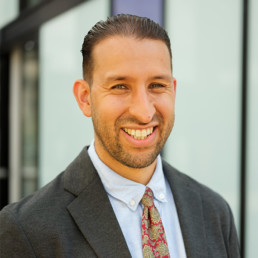
Written by Mohamed Abdallah
With almost two decades of experience, Mohamed started his journey in youth work and pupil referral units before spearheading groundbreaking inclusive practices and systems as a leader in an 'Outstanding' all-through mainstream school. Driven by a relentless commitment to positive change, Mohamed now dedicates his efforts to collaborating with school leaders across the nation as the Head of the Inclusive Leadership Course at The Difference.
“We are meaningful as individuals only through our interconnections”
Alexander and Conrad (2022)
The “success” I experienced as a youth worker, a practitioner in a Pupil Referral Unit, and as a senior leader in mainstream schools has at times been credited to me or my leadership, and that often makes me feel uneasy.
Partly because I experience imposter syndrome on a regular basis. But mostly because everything that “I have achieved” only happened through collective efforts.
It was only achievable because a community of people pooled together their desire, commitment, skills and knowledge to make a difference to the lives of children.
And this is why I don’t believe in individual heroes or saviours.
It sounds like I’m being a little contrary, but I hope that when you get to the end of this post it will be clear that what I am proposing instead is so much more liberating, freeing us from the idea that success is a purely individualistic journey. I think the opposite is true, that the collective efforts are more empowering than the individual endeavours of one.
KEY INGREDIENTS
Most of my childhood and teenage years were spent on Studley Estate in Stockwell. And to this day, that time remains one of the most significant chapters of my life. And it is the sense of community I experienced there which has become an integral part of my identity. It influenced how I grew, how I socialise, how I make decisions, and where I feel a true sense of belonging. It is also where I worked out what my skills and qualities are and helped me develop a wealth of knowledge about my community.
Throughout my life, whether as a child on Studley Estate, a youth worker in the community, or as a senior leader within schools, there are three key ingredients that formed an active and healthy community which stood out for me. These three ingredients are: DISCOVERY, COLLABORATION and ACTIVITY
Let me share their significance using a personal example from my childhood.
THE PEN
The Pen, the football cage right in the heart of our estate.
Discovery
As a child, I discovered a community of children who played regularly in the Pen and shared the same passion for football. It became our meeting point after school and on weekends, it fulfilled our need for play and socialisation through football. The discovery of the Pen and our shared love for football became our major connection.
Within our little community of talented footballers, we recognised and celebrated our differences. Some of us supported different teams (I’m a lifelong Liverpool fan), but our shared passion for football forged a bond that transcended those differences. We had an instant connection, rooted in our passion and knowledge of football and our ability to play the game.
Each of us brought something unique to the table. I play as a defender, and that was a valuable asset in a team full of players who wanted to play in attack. We recognised the unique skills and qualities that every player brought which in turn helped us create a space where everyone felt safe, where a shared passion and a common purpose thrived. We discovered our purpose, to have fun through the medium of football.
Collaboration
Looking back, reflecting on us as young children, it was incredible how well we collaborated with one another. We organised ourselves into teams, we agreed on how long a game should be, and we always accepted the result of a game without any adult involvement.
The centre of the Pen became our arena for collaboration, where we waited until everyone who wanted to play had arrived before selecting teams. It was a joint effort, facilitated by everyone present in The Pen at that moment. We recognised that each person who joined us was not only a football player but also an active agent in creating the ideal space for play.
We understood, even at a young age, that leadership could emerge from anyone, regardless of age, background, or footballing ability. We acknowledged the leadership potential within us all.
Activity
And then, we played, we mobilised our assets into collective activity.
We acted collectively in our game, where there was fairness, equity and trust. And though the game was always competitive, we always prioritised fun. Without the intervention of adults, we treated each other with mutual respect, accepting the game’s outcome and naturally resolving any conflicts that arose.
This collective activity involved every single one of us, as we recognised that to play a game of football it required the collective participation of all of us.
We discovered each other and our assets, collaborated in shaping teams, what type of game we would play, and engaged in the activity of the game in a way that was organic and purposeful.
COMMUNITY
These key ingredients can work for any community, including school communities.
Discovery is at the heart of every strong community.
It means discovering how and where people may have a sense of belonging, forming friendships, and feeling supported in their growth and development, discovering their own assets and capabilities. It’s about discovering spaces where people can come together, share their experiences, and provide a nurturing environment for children.
Opportunities to discover spiritual connection, helping people to collectively share values, wisdom, their gifts and connect to much needed resources, services, and opportunities for personal and community development.
When we foster genuine discovery which lead to connections among different groups, we create a tapestry of relationships that weaves us closer together.
Collaboration is essential for community growth and progress.
It means working together on projects, initiatives, and events that have a positive impact on people’s lives. Sharing skills, knowledge, and experiences, and creating a collective pool of wisdom and expertise. Collaborating contributes to the support of one another, exchanging ideas that work toward common goals addressing social issues to promote inclusivity, and create a sense of unity.
When we collaborate, we tap into the diverse strengths of our community and achieve outcomes that are greater than what any individual or group could accomplish alone.
Activity is about taking collective action and empowering every individual within the community to contribute to its well-being and success. It means staff, children and families being active participants in decision-making processes, having their voices heard, and realising their potential as change-makers.
They can collectively act by engaging in volunteerism, advocacy, and community-building activities alongside the local community. Acting together can foster a culture of empathy, respect, and social responsibility within school communities. And in turn promoting social justice and supporting those in need by empowering them through their assets. Most importantly a school and local community taking ownership of their community’s future.
When we act collectively, we create a sense of agency and shared responsibility, leading to a stronger, more resilient community.
BY THE COMMUNITY
To be a community member is to care, to take responsibility, to acknowledge your collective power.
To be a community member is to cultivate meaningful connection to the numerous relationships and institutions on our doorstep.
So, I want to return to where I started.
Our communities are shaped by our interactions, our relationships, and the wisdom we share with one another. When we achieve something, it is because we have worked with others, supported one another, shared resources and acted together.
And this is why I don’t believe in individual heroes, whether they are people or institutions. Because it is the collective efforts of many that is heroic. It is our collective power that creates sustainable change.
Not a single person.
It requires collective risk taking to effect change. It doesn’t happen overnight, it takes time, but it is sustainable. It is designed by the community; it is done by the community, and it is sustained by the community.
If you are curious to learn more about Drawbridge and how we can help schools foster meaningful community engagement? Feel free to reach out to me at mohamed@drawbridge.org.uk.
The Power of Networking

Written by DiverseEd
Diverse Educators started as a grassroots network in 2018 to create a space for a coherent and cohesive conversation about DEI. We have evolved into a training provider and event organiser for all things DEI.
#DiverseEd Table Photo
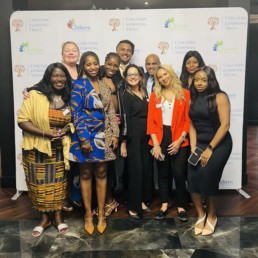
This Friday night we joined the team at Chiltern Learning Trust for their annual Racial Equity Network Dinner (#REND). We had been unable to make it the last two years running despite really wanting to attend and support it, but this year we were able to make it happen.
We sponsored a Diverse Educators’ table and invited some of our collaborative partners from the race section of our DEI DIrectory to join us on our table. It was brilliant to finally all be together in person! It is not very often we are in the same room, at the same time – the energy was palpable and we were very much the ‘naughty table’ as we needed to take advantage and connect whilst we could.
Thanks for joining the team from #DiverseEd:
- Nadine from Aspiring Heads
- Rhia from Black Teachers Connect
- Jemma from Let’s Start a Conversation Today
- Aretha and Youlande from Mindful Equity
- Louise and Marcus from MixEd
Getting to Luton for 6pm on a Friday night, at the end of a long year and a hard term, was not for the faint-hearted. Our table travelled from Manchester, Nottingham, Birmingham, Watford, London, Kent, the New Forest and Bath to attend the event. The journey to the event is very much a metaphor for the direction of travel of the work – it is non-linear, frustratingly slow and there are lots of obstacles to navigate including poor conditions and route closures.
We were delighted to be in the room where it was happening, along with 480 other attendees, who all care about and are committed to affecting change when it comes to racial equity in the education system. We had a lot of other connections and collaborative partners at the event including:
- Diana from the Academy of Women Leaders
- Frankie from BAMEed SEND
- Albert and Johnoi from Black Men Teach
- Iona and Sam from Edurio
- Daryl from Flair
- Paul and Andrea from the Institute for Educational and Social Equity
- Penny from The Linking Network
- Bukky, Flora, Yamina, Kiran and Emma from #WomenEd
In the more formal part of the event before the eating and networking started, there were a series of short presentations from a range of speakers:
- Sufian Sadiq – shared a heartfelt reflection on the fatigue and frustration of how slow the rate of change in this work is for him, his peers and his family. His call to action was for solidarity.
- Professor Paul Miller – shared the systemic data to highlight the structural and societal barriers for people of colour in our sector. His call to action was for allies to leverage their power.
- Sarah Owen MP – shared a personal narrative of being a biracial pupil and how this work could have helped her journey as a pupil but also now as a politician. Her call to action was to create greater belonging.
- Dr Patrice Evans – shared a quote from Obama and reflected on her journey being the only black woman in many spaces. Her call to action was to collect the stones and to use them to build empires.
- Hannah Wilson – shared her awareness of being a white person speaking to a room of global majority and then used the space to amplify the organisations in the room doing brilliant work in this space. Her call to action was to join the coalition.
- Assistant Professor Derron Wallace – shared a comparative lens to the data and the activity in the US compared to the UK and questioned what our collective strategy for racial equity is. His call to action was that everyone needs to own the role they have to play.
In the less formal part of the evening it was great to see, chat to and smile across the room at Alison from CCT, Mary from Myatt and Co, Tom from Ambition School Leadership, Phillippa and Sajid from PACT, David and Ena from Venturers Trust, James and Sharon from Inclusive MAT, Antonia and Bhamini from Pioneer Educational Trust, Adam from OTSA, Thahmina and Omar from CST, amongst others.
#REND is a brilliant example for the power of networking. The event was a magnet for people seeking a shared vision, a unified purpose, a collective agency. Together we are stronger, and we can go further.
Do check out the social media posts via the event hashtag #REND and put the draft date for the 2024 #REND event in your diaries: Friday 12th July. We will have a table there again and will invite new partners from our DEI Directory to join us. It would be great to see you there and they are increasing capacity to 600 for next year’s event.
DEI Directory Flyer
